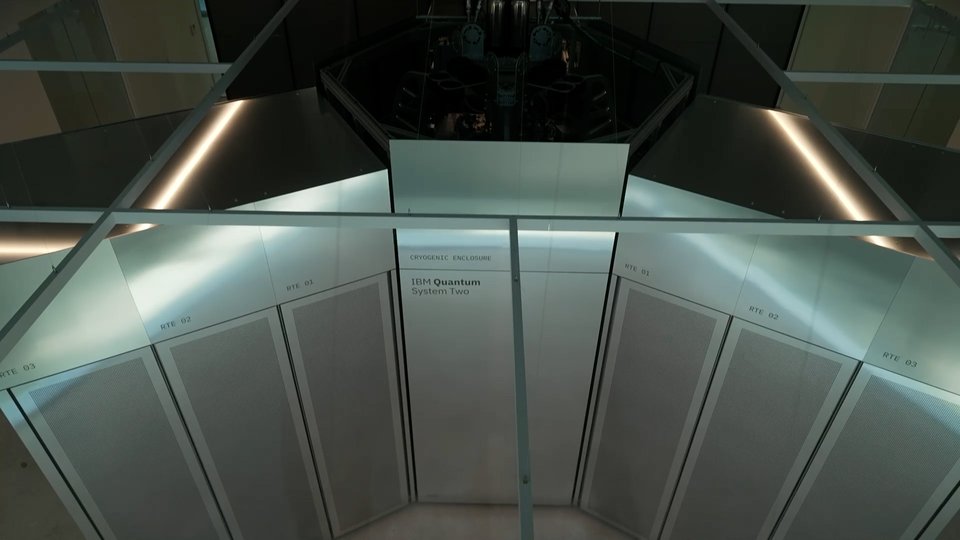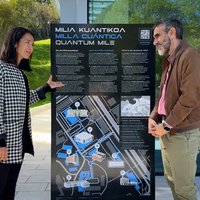Accumulating the Sun's energy
It is well known that the Sun gives not only light but also heat. And this heat is used by solar thermal power plants to obtain electricity.
Essential for this process are the salts used to store heat. But these salts are not very good carriers. At the CIC energigune research center of the Miñao technology park, materials that could be an alternative to these salts are being researched to make the exploitation of the heat of the Sun more efficient and economical.
Our planet receives an enormous amount of energy from the Sun. The energy received by the Earth from the Sun for a period of less than an hour would be sufficient to meet the world’s energy demand for a year. Despite this fact, fossil fuels are mainly used to meet energy needs, and solar energy exploitation systems are not widespread.
There are several ways to convert solar energy into electricity. Photovoltaic plants convert the energy of the sun’s rays into electricity. In contrast, installations using solar thermal energy take the energy from the sun in the form of heat, i.e. temperature.
The CIC energiGUNE research centre is working to improve the exploitation of thermal energy.
Javier Rodriguez / CIC Energigune:“What is done in thermal power plants, in these thermosolar plants, is to take the radiation that is taken from the Sun in the form of heat and with that, after going through certain processes, we get water vapor and with that water vapor, through a turbine, we get electricity.”
In solar concentration plants, mirrors or heliostats are used to collect the sun’s rays at a point or line. The fluid that is passed through a circuit is heated thanks to the sun's rays, and this heat is used for the subsequent generation of steam, the movement of a turbine and the production of electricity.
But in these facilities, it is not only possible to generate electricity, but also to store heat. This allows installations with a collection system to generate electricity when the sun’s irradiation is low and even at night.
Javier Rodriguez / CIC Energigune: “The main advantage would be that today’s thermal power plants have the possibility to store heat.”
However, not all solar thermal power plants have a heat storage system. Some of them have only direct production. Plants with heat storage capacity use heat storage salts, such as molten salts. They heat the molten salts using the energy of the sun, and when there is a need, the salts are required to heat them.
Javier Rodríguez / CIC Energigune: “Why are salts good? Because they have a very high specific heat. What does that mean? They need a lot of energy to heat up, but then, when we want to recover that energy, they give us a lot of energy, and even though there is no sun then, we have enough energy to get current.”The operation of solar thermal power plants is becoming more and more efficient. However, the heat storage facilities they use must necessarily be very large because the salts are very poor heat conductors.
Javier Rodríguez / CIC Energigune: “The salts have a very poor thermal conductivity, which greatly affects the operation of thermal power plants. This means that the structures used to change the heat must be very large, which costs a lot of money and have a very difficult design.”At CIC EnergiGUNE they are looking for alternatives for the system of molten salts for the collection of heat, and for this purpose they are researching metal alloys. In fact, tests to date have found that metal alloys have a higher heat collecting capacity than molten salts.
Javier Rodriguez / CIC Energigune: "What we are proposing is to greatly improve this thermal conductivity through these metal alloys, and then greatly facilitate the operation of the plant. What does that mean? Getting in and out of the heat can be a lot easier.”
Plants using molten salts take advantage of the sensible heat, which is the heat taken up and stored by the salts. The temperature of the salts rises, but they do not undergo other physical changes.
The metal alloys under investigation at EnergiGUNE offer the possibility of storing large amounts of energy, but in the form of latent heat. That is, these materials undergo a phase change when heated and transition from a solid state to a liquid state, or vice versa, depending on whether they provide or receive heat. Water, like these alloys, undergoes a phase change when heated, and depending on the temperature, it is ice, water or steam. That is, it becomes solid, liquid, and gas as it is heated. The amount of heat that metal alloys can store during phase change is very high, which offers several advantages over molten salts.
Javier Rodriguez / CIC Energigune: “They are a series of materials with a change of state. To melt or solidify all this, we can give or get an energy. This energy is much higher than what can be stored in molten salts, which means that the total mass of matter we need is much less in the case of metal alloys."
The aim is to obtain alloys with the ability to store a large amount of heat, but not any alloy; energiGUNE researchers are looking for a eutectic alloy.
Javier Rodriguez / CIC Energigune: "When two elements are mixed, they are mixed in different proportions, and there is a proportion that has its lowest melting or solidification temperature. This is called eutectic.”This research group believes that the eutectic alloy would allow them to operate at the constant temperature required by solar thermal power plants.
Javier Rodriguez / CIC Energigune: "In thermal power plants we need a constant temperature to evaporate the water and then take it to the turbine to make electricity from the water vapors there. What this requires is always working at a fixed temperature, because the turbine demands this. It operates at a pressure that requires this temperature. That’s why we want this melting or melting temperature to be exactly the same.”
In addition to researching metal alloys, this group has also launched a study to improve molten salts and is also investigating thermochemical reactions, which are chemical reactions that provide or take up heat.
Buletina
Bidali zure helbide elektronikoa eta jaso asteroko buletina zure sarrera-ontzian










